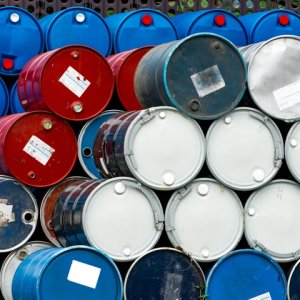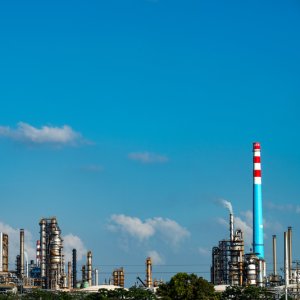
Crude Desalination and Dehydration
Cantarell has been producing Maya crude oil, a heavy crude oil-type with high sulfur contents, since the late 1970s. In the early days of production, the extracted oil was of great quality as its water and salt content were practically zero. However, by the end of 2006, the crude’s quality began to drop considerably with water and salt levels increasing at alarming speeds. According to current specifications, Maya crude oil intended for exportation should stay within the range of 0.5% water and 50lbs of salt per every 1,000 barrels. Therefore, it is of the utmost importance to provide the crude oil with the right chemical treatment to ensure that this oil can be commercialized with water and salinity levels within official standards. At the request of PEMEX E&P, Química Apollo developed an integral program to improve the quality of the extracted hydrocarbons taking advantage of PEMEX’s available infrastructure. This new treatment consisted of preconditioning the crude oil from the platforms and subsequently dehydrating it in the storage tanks at the Dos Bocas Marine Terminal. After testing its technical proposal at the laboratory and in industrial applications, Química Apollo launched its Integral Desalination and Dehydration Program for Maya crude oil in 2007. The accelerated reduction in the hydrocarbons’ quality created a situation far beyond production forecasts, meaning that PEMEX E&P’s infrastructure was not sufficient to desalinate and dehydrate the oil. Química Apollo adapted and was able to provide a solution using available resources, giving PEMEX E&P time to gradually modify the Dos Bocas Marine Terminal, which was originally built and designed to store oil, and turn it into a conditioning terminal. Although the chemical treatment and the infrastructure changes started to yield great results, new variables altered the situation.
n 2010, different types of oil began to be mixed. Today, the mix includes heavy oil from Cantarell, extra-heavy oil from Ku-Maloob-Zaap, and light oil from the Abkatún, Litoral, and Pol fields. This has further complicated desalination and dehydration activities, thus the Integral Program has to be constantly reformulated, according to the operational variants that present themselves along the way. Química Apollo’s Integral Program has been flexible enough to avoid delays in both domestic distribution and exportation of Maya crude by ensuring that the salinity and humidity parameters obtained have matched both client and market requirements.
















